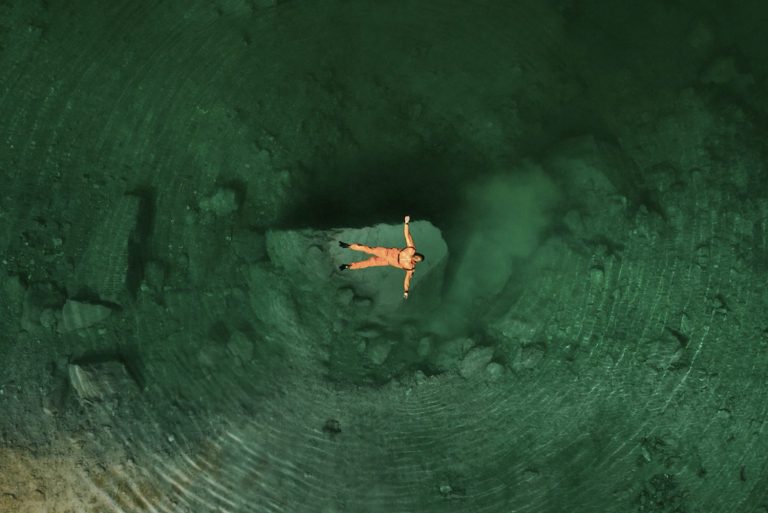
We’re elated to announce the second wave of the ESC 2030 AW open call ( → ) garnered 262 exceptional submissions from global artists. A heartfelt thank you goes out to all who participated, especially those returning to the ESC fold. Your ongoing support is the lifeblood of our initiative.
At 0→1, our mission extends beyond showcasing art; we aim to be a platform for artists’ concerns and visions about the future. This aligns perfectly with the ESC dialogue, which serves as a mirror reflecting our collective fears and aspirations. It’s a conversation that has become even more poignant in the wake of the pandemic. This challenging period has thrust us into a cycle of self-reflection and adaptation, making mental well-being a priority as we navigate a ‘new normal.’
This new reality also brings technology into sharper focus. As our lives increasingly shift online, the boundaries between the real and virtual worlds are becoming indistinct. This digital immersion has a dual impact, serving both as a connector and a divider, especially in our relationship with nature. The question then arises: can nature escape the clutches of digitalization?
The recent wave has also spotlighted other pressing issues, such as human brutality and climate change, adding more layers to our ongoing dialogue. These topics not only challenge us but also prompt us to reevaluate the future trajectory of art, technology, and humanity at large.
So sit back and delve into the curated works below, thoughtfully selected by 0→1 and the experimental art space 1646.
Audiovisual artist and interactive experience designer Magdalena Hart alongside her fellow Akyute collective members from Barcelona, Spain — Natalia Gima & Miriam Felici, focused on integrating nature into the digital age.
‘In our practice we use technology as a means to reconnect the human experience with the natural world, unifying interaction design, audiovisual arts, and generative sound.’
A documented performance, visual and auditory, a space-time where the human being connects with nature from a different perspective. Positioning the human in a place far from superiority towards nature and towards ourselves.
‘The human species is not as relevant as we believe we are. And the earth really does not give a damn about our existence. Nor do these plants. So do set your ego aside, so we can live in symbioses with our environment.
This audiovisual piece was the third evolution from our initial wearable prototype using biofeedback. Developed using C++ programming via Arduino and the sound composition software, Reaper. This project consists of the development of a MIDI controller using the biodata obtained from each plant as an input to create an electronic musical instrument. In this particular instance, we placed more focus on our sound design, using sampling as a technique for the live performance.’
Credits: Direction — @helloyozy, camera — @faborojas, artists — @akyute_ @natalia_gima @magohart @ohh_m, art direction & styling — @emi_rat, asist. art direction — @labrujalatina, sound design — @magohart, sound tecnician — @mjbordenave, production — @josefina_doll, model — @valegolpec
Xi Lei/奚雷 is originally from China and currently he lives in two cities — Berlin and Cologne in Germany. Artist, writer Xi is also a doctoral candidate in artistic research at the University of Arts and Industrial Design Linz. His recent research and art-making focus on the political and aesthetic implications of non-anthropocentrism. He works in a variety of forms, such as video, film essay, and installation, which often derive from his writing. He is also a writer of art theory and criticism. His exhibition review on ‘A Series of Utterly Improbable, Yet Extraordinary Renditions’ (2018) was selected for publication in the IAAC 2018-2019 Exhibition Reviews Annual.
The work To Look Is to Die primarily presents a speech that takes place in a scene adapted from one picture of the well-recognized photograph series ‘Lunch atop a Skyscraper.’
Instead of the iron-workers, nine militants are resting on the girder, which refer to the ‘Tarnac Nine,’ a French group of nine anarchist saboteurs. The speaker declares itself a highly intelligent insect called the homo insect, which has a holometabolous life cycle. In the speech, he asserts to look is to die for his species. By doing so, he introduces the inherent contradiction of their survival strategy as oviparous animals, which might cause repetitive self-destructions. This work aims to reflect on the ontological presuppositions of the relevant mainstream Western leftist discourse, particularly the ontological presuppositions of self-consciousness and time, and the associated anthropocentric perspective. In doing so, it alludes to the spiritual dilemma of numerous current revolutions and also aims to open up new directions for imagining and thinking about political movements in the near future (e.g. the next ten years).
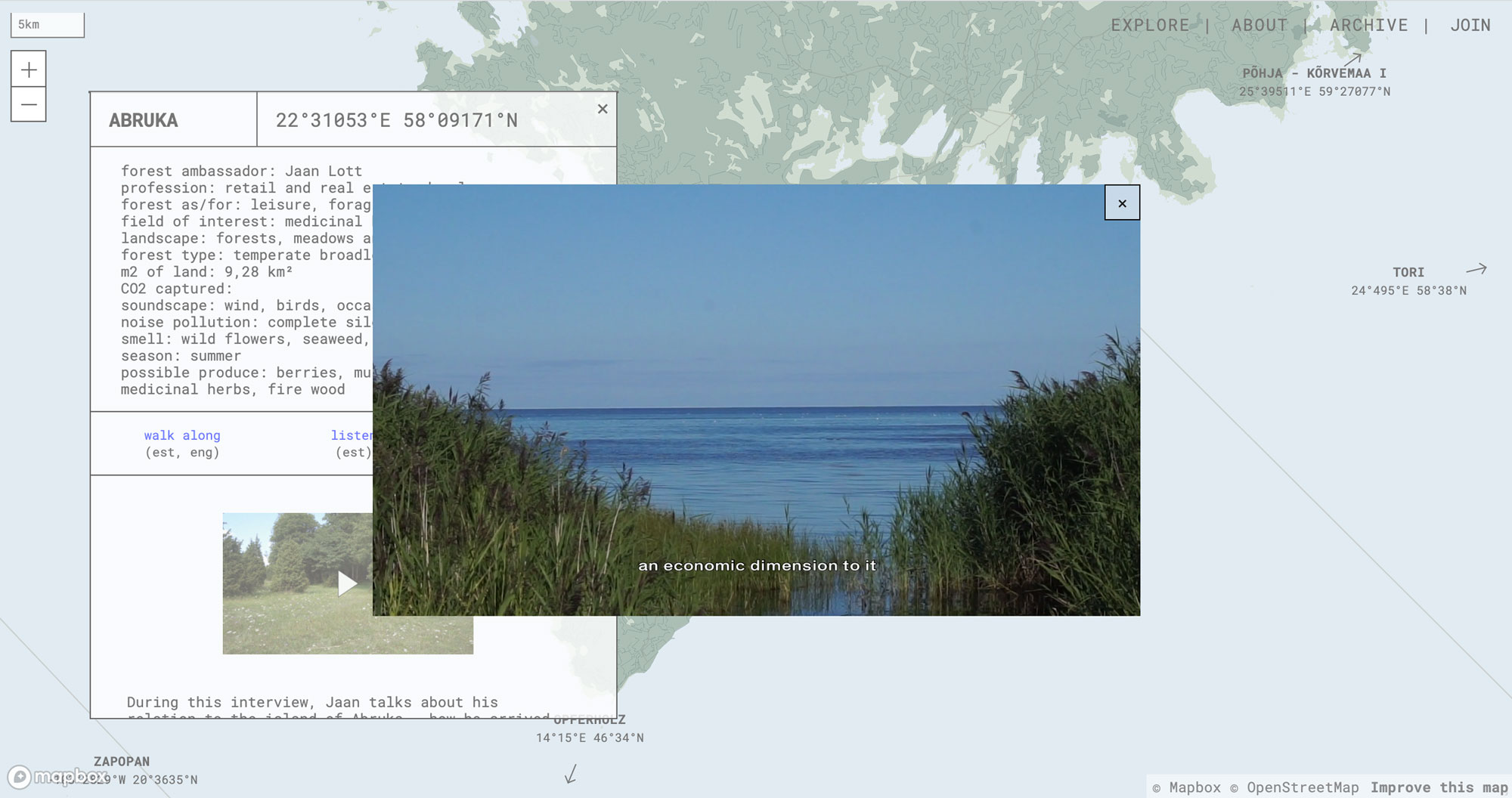
The notion of ‘agency’ is always central in the work of Hannah Segerkrantz (Amsterdam-based, NL), and goes in parallel with the re-definition of what we address as our ‘surroundings’. With an interest in the intersection between architecture and radical ecologies, her approach to research is environmental, sensitive, and contextual. Whether exploring the cultural background and gestures of architectural materials or studying the relations between objects, people, and local traditions, she offers tools and means for bridging our connection with the environments we inhabit.
‘Throughout human evolution, we have slowly separated ourselves from nature, and instead of co-existing, we are now dominating and exploiting it. When sensorial knowledge and stories of natural environments are disappearing from our society, how can we re-interpret our connection with nature today?’
Forest Archive is an online archive experience, a digital environment for sharing personal connections and stories about forests. The viewer can wander around the map and get access to practical information about various forests around the world, as well as read or listen to a personal story connected with a mentioned place. Each forest on the map is represented by a local forest ambassador, who is taking the viewer on an audio-visual walk throughout which we discuss the meaning and importance of nature in their lives. The ambassadors are a human link to the information, history, and culture within our experience of nature, and the stories they tell serve as an informative tool, giving the viewer alternative ways of immersing themselves in the forests.
Through digitalizing the forest, the Forest Archive aims to help people understand the value of existing together with nature.
Grau has lived next to two oceans.
‘This is a video piece told from the point of view of someone experiencing a transformation. The narrator refers to what they imagine becoming in ten years & the next decade is an important point of reference for them. From my own perspective making this video was an attempt to create an artistic practice that faces outward — away from myself & away from people, toward the world & receptive to what is and what might be.
The narrator is not attempting to change as much as they are observing the changes around them. Similarly, the work of Grau is to de-center myself from creativity & imagination & create videos that observe an unpredictable, always-transitioning world, while inviting others to do the same.’
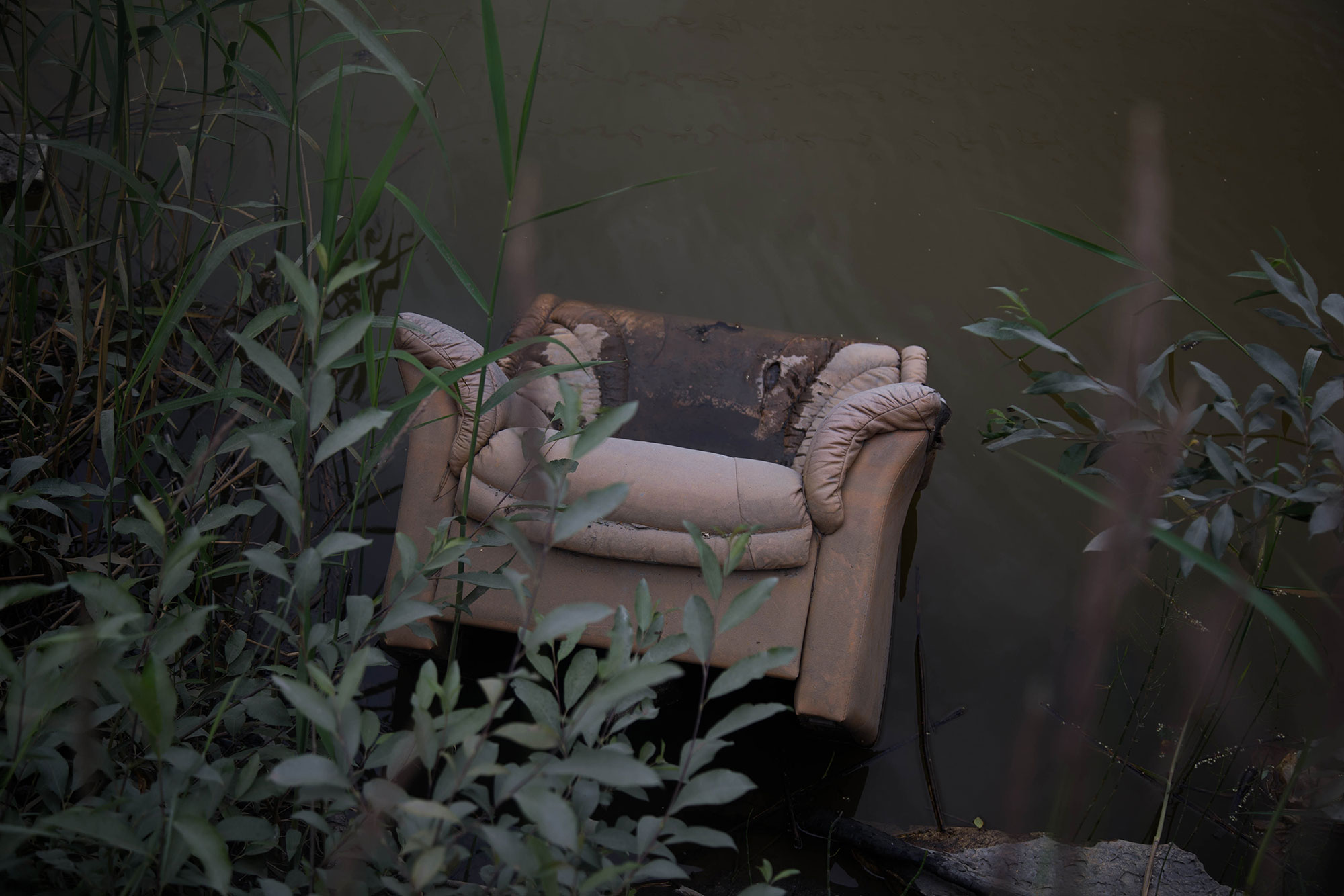
The collective Translation Flowers began to work as a group in the summer of 2019 when they participated in an art residency in Northern Finland on the abandoned island of Varjakka. They are an international female trio, whose members are: Inkeri Jäntti (FI), Nancy Dewhurst (UK) & Sunčica Pasuljević Kandić (RS). With each artist coming from different artistic and linguistic backgrounds (Finnish, English, and Serbian) they found a common interest in place, cultural diversity, the semantics of language, translation, and (mis)communication between one another and between their environments.
Trashscape is an experimental excavation of the Anthropocene, from the perspective of multiple futures. Fly-tipping* sites become archaeological digs, museums, and art exhibits. The project serves not only as a platform from which to interrogate and critique humankind’s consumerist nature; but also from which to playfully investigate language, to imagine possible futures, and to question the nature and definition of art and beauty.
The artwork was originally made for the Oulu August Festivals and takes the form of a website.
* Fly-tipping = the act of illegally dumping waste
Video artist and performer Aníbal Conde is from Tacuarembó, Uruguay. In his work, he focuses on the crossing of disciplines and on the investigation of the limits between the living arts and the moving image.
His video pieces were selected for various festivals: the International Festival Process of Error, Valparaíso (2019), MUTA International Appropriation Festival, Peru (2018), the International Ultracinema Festival of Mexico (2017) and more. In 2018 and 2019 he was the guest curator of the Picnic Sessions at CA2M in Madrid, Spain.
‘The digital image does not appear already like an image of a represented space but like waking up to a subjective tactile sensation, an inner space to be embodied.
In the distant future where all the digital archives are corrupt, we accede to a digital nature loaded with nostalgia and surprise. This is the first of several compendiums found in some hard drives that survived the inclemencies of nature and the passage of time.’
Designer Boey Wang based in Eindhoven, Netherlands is originally from China. A recent graduate of Design Academy Eindhoven, he has a background in comics making UX design, and graphic design.
His work aims to reframe conventional perceptions of reality. His design methodology encourages changing attitudes as an alternative solution. He believes that design can bring us back to the state when we are connected to the world without the rigid frameworks of thinking. Adopting a storytelling approach to value daily objects, we can reframe our relationship to these essential and overlooked aspects of life. Objects can be honest only if we understand our way of seeing them; it would create a culture ready to face unpredictable reality with open eyes and hearts. That’s where lays his passion and hope in design.
‘Pandemic social distancing is not only physical but also personal. With the rapid changing of uncertainty, we are stuck between the physical concern of safety and the desire for social activities with unspeakable anxiety and insecurity.
Our tools and systems, notably the measurements as the foundation of human creation, are designed to quantify and unify reality statically. It’s not only limited to responding to uncertainty responsively but also being rigid in allowing imagination and feeling. A measuring system with an adoptive range is needed, especially including the variable range of humanity.’
By stretching the law of physics, this project demonstrates an elastic frame of being inclusive of our feelings and subjectivity. You can find four tools in this project, a rubber ruler that addresses social distancing and extends as tension rises, and a 3D set square that offers reflective perspectives. There is also a drawing compass with a calligraphic brush at the end that emphasizes fluidity, and a flexible bubble level suggesting that relative flatness might be curved.
The project is for adults to relearn the rigid understanding of reality and also for teenagers to understand the reason for inventing measurements. It evokes our elastic instincts of seeing the world without any frameworks. By opening up the personal uncanny towards uncertain reality, an entrance of valuing and exchanging diverse understandings could be possible.
The Seoul, Korea-based contemporary artist Gyo Nyoung Yoon is interested in digitizing herself and her life. She believes that everything — experiences, relationships, emotions, and even human beings can be uploaded and downloaded these days. By digitally converting herself, uploading, and sharing the data, she aims to meet people regardless of physical limitations such as distance and time with the possibility of making a permanent backup for her present mind.
‘As I started to live away from home, I faced a problem that I had never had before in my life — ‘Find a place where I belong’ and it was harder than I ever imagined. It is a demanding job, that needs constant effort that I could not afford because of my circumstance as an international student. Instead of struggling to make a home in physical reality, I decided to make it in digital reality by applying digitally recreated layers over my physical reality, hoping to fill in the blanks I have in my life and my mind.’
Brazilian creative director and filmmaker Thaís DeMelo works in cinema, video, and the development of artistic installations in fictional and experimental productions. She appeared in multiple festivals, cinemas, collectives, museums, and art galleries in selections for the Museo de Arte Contemporáneo de Alicante (ES), Anthology Film Archives (USA), The Monarch Theater (Canada), Elysium Gallery (UK), tactileBOSCH (UK), Oped Space gallery (Tokyo) Roodkapje Rotterdam (NL) among other culturally relevant spaces in more than 15 countries.
AMPM is an experimental dystopia where analog TVs have the power to emulate simulations based on what is in the deepest part of your brain.
The film depicts one of Thom and Sharon’s experiments with television hypnosis — the secret that makes both of them able to make a successful trip, lies in the connection between their souls and mutual bias.
The name of the project ‘ESC’ is very similar to the concept of time traveling and escaping reality, just like the film, ‘in an unknown space, with an unknown audience. In reality, we propose the freedom to explore something new’ The film is about unknown spaces, feelings, and new forms to get away from our boring realities and explore something new, also criticizes the way we think and how alienated we can get by media.’
The work of artist Eli Goldstone (from Tallahassee, Florida, US) examines objecthood and gesture to determine what differentiates humans from tools through a series of contradictions. Firstly, the negation of being, and secondly that there is no right way of doing it. The work is theatrical and engages the viewer through humor and hyperbolic situations.
‘The theories of art in the every day and object autonomy connect my body of work as a whole. My performances overcomplicate each task, emphasizing the gestural uses and autonomous behaviors of the everyday objects being used. Through performative gestures, the re-contextualization of these objects begins. I disassemble, repair, rearrange, crawl, and interrupt the object and space. The object is an artifact, while the video is a record of human influence. Each piece guides the viewer to perceive these objects as extensions of the body and human gesture. The process of re-contextualizing is ultimately used to question education and the act of teaching.
Filmed over five months, the videos explore my re-learning of everyday tasks. While producing the work, I repeatedly questioned my daily habits to recognize how influential institutionalized teaching is on how we behave. The French philosopher Henri Lefebvre defines the concept of everyday life as, ‘referring to all the spheres and institutions,’ which together establish the concrete individual. In conversation with Lefebvre’s statement, this body of work examines the ways in which education influences an individual’s routine behaviors.
While the content of the videos diverges from institutionalized teaching, the sculptures are meant to represent the controlling nature of education. By presenting the viewers with a predetermined path of interaction, they must follow that path in order to view the content on the screens. As a result, the viewers become complicit in upholding the one-sided system. The presentation of the videos on the screens, therefore, suggests the existence of alternative forms of learning within a larger, controlling system.’
Lois Notebaart was born in the Netherlands however while growing up she lived in the United States (Arizona and Montana) and France (Paris). Currently, Lois is based in Amsterdam, The Netherlands where she obtained a BA of Arts in the Academy of Photography. Also, she interned with photographer Robert Koene in Cape Town, South Africa.
Besides the arts, she is particularly interested in science and language, and currently studying the Russian language. Working with big clients like Barts and Het Stedelijk Museum she also maneuvers really well in the art scene. No matter how different the projects that she takes on — they all begin in the same studio with a lot of research and books.
‘I experience the world as dynamic, continuously changing. I deconstruct my world and use the pieces to construct new images, stills, and videos.
Growing up in a world where reality is a shredded collection of information, art is my way of dealing with it. Being constantly flooded with all the world’s news and stories it is impossible to filter out what is important and what is ‘real’. Creating images works for me. Every image I make holds a question that I can’t answer. But as soon as the piece is done I can feel my head making a little more space for new unanswerable questions.
Coming from a science-oriented family, reading and maneuvering in this world comes naturally to me. I would love to be a bridge builder between these worlds. Even if that would only mean getting attention for research and inventions that need more minds talking about it.
For example: Should we upload our brain? Is it ethical to evolve our bodies? Does the language we speak shape the way we think?’
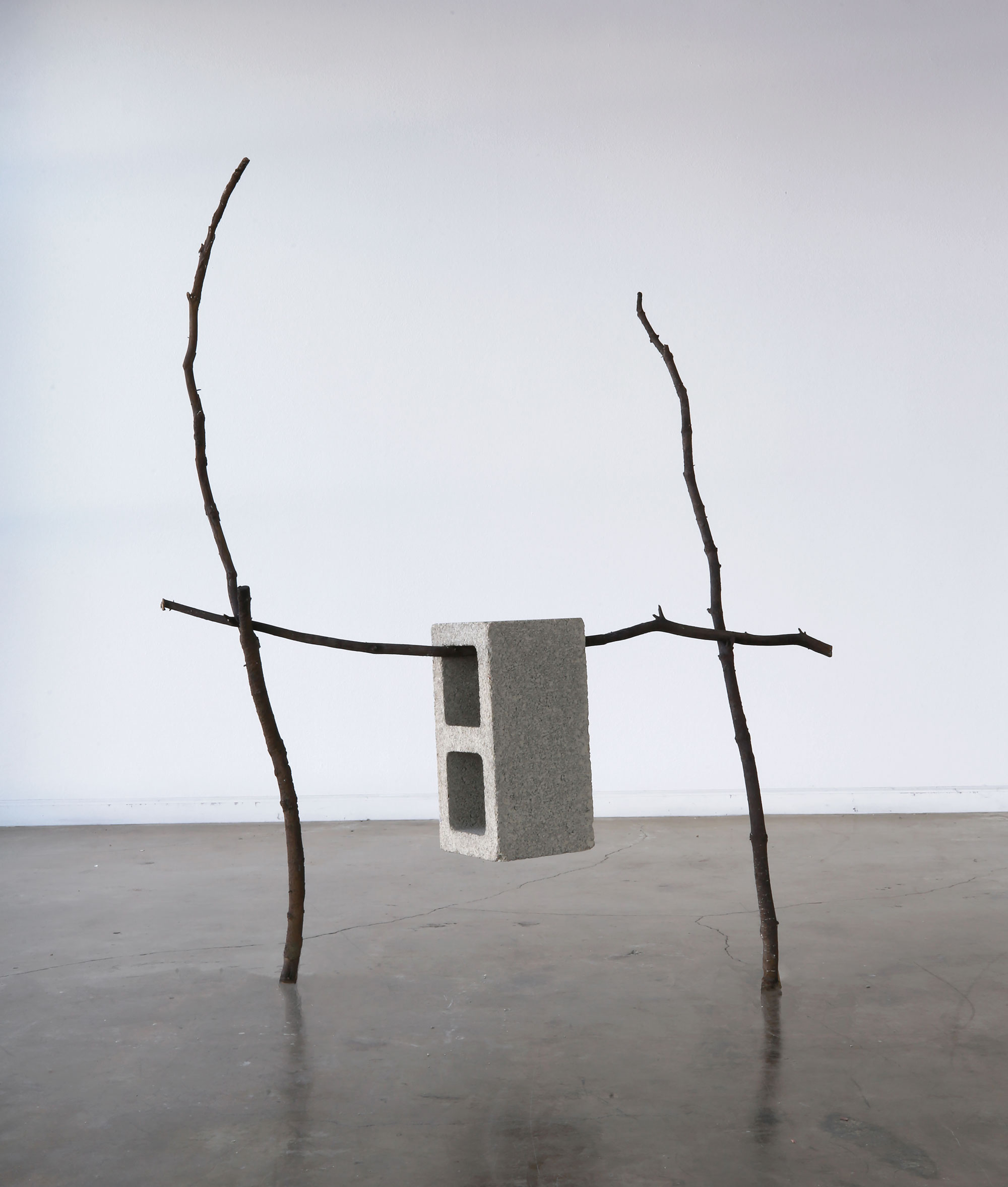
Andrew Orloski (Fresno, California, US) in his current work explores notions of monumentalism and banality with an inquisitive look at mundane, often overlooked objects we surround ourselves with daily. His process utilizes a variety of traditional and contemporary mold-making techniques, which aid in the transformation of objects through materiality. Orloski engaged in creating work that crafts narratives between the ephemeral and permanent. Industrial materials such as metals, glass, concrete, and gypsum are essential to his process because of their deep roots in history and economy. They can be cast, fabricated, welded, and modified to allow weight and balance to work as subject matter.
‘Which material builds what? Earthen materials such as wood have been utilized in building society for thousands of years, while streamlined solutions such as cinderblocks have made the process of expansion easier through mass replication. What happens to our collective consciousness when wood (in this case, branches found in the California wilderness) is cast in metal and how does it help us understand how materials and shift of materials can change our understanding about what objects can do and mean.’
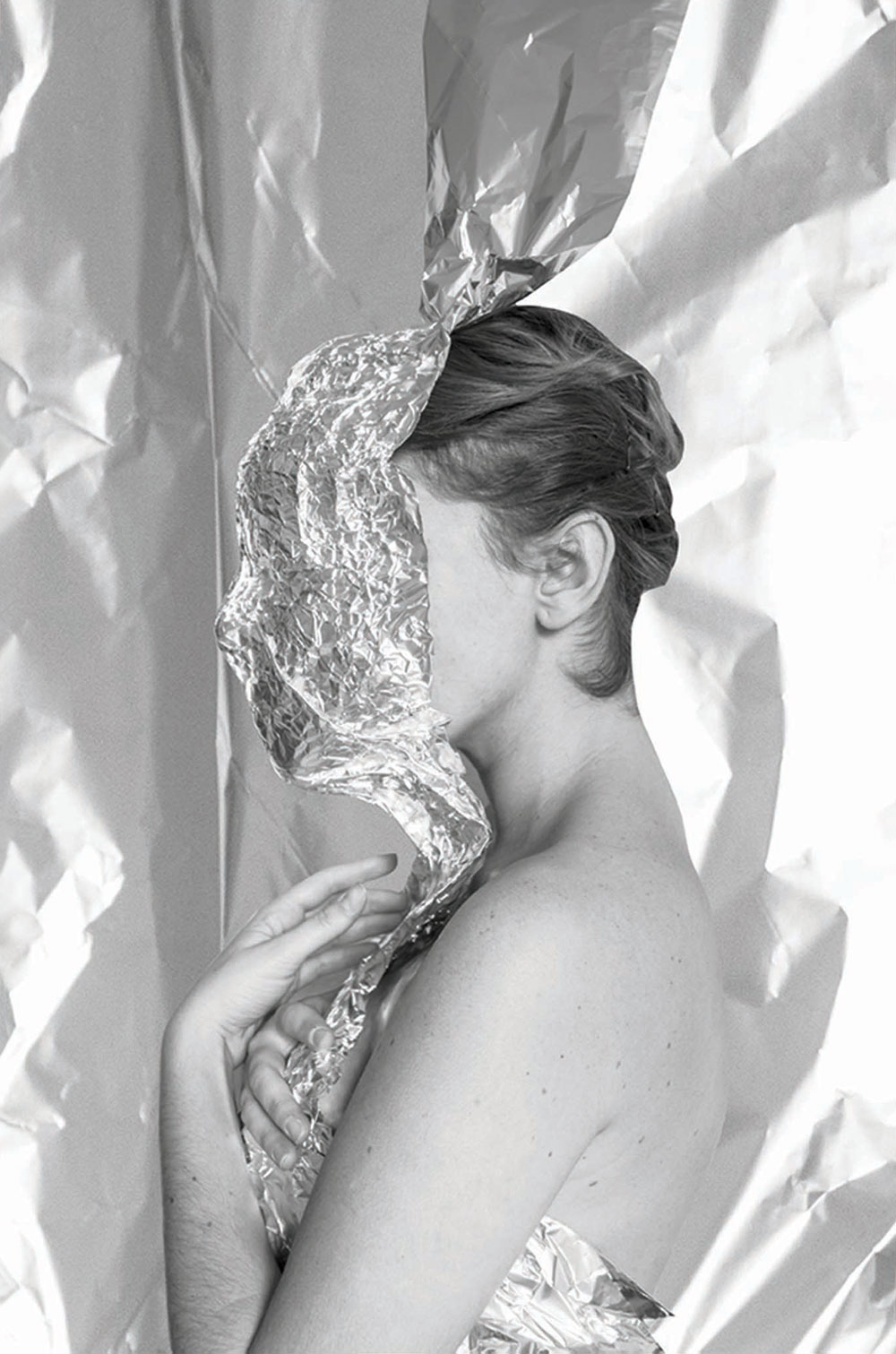
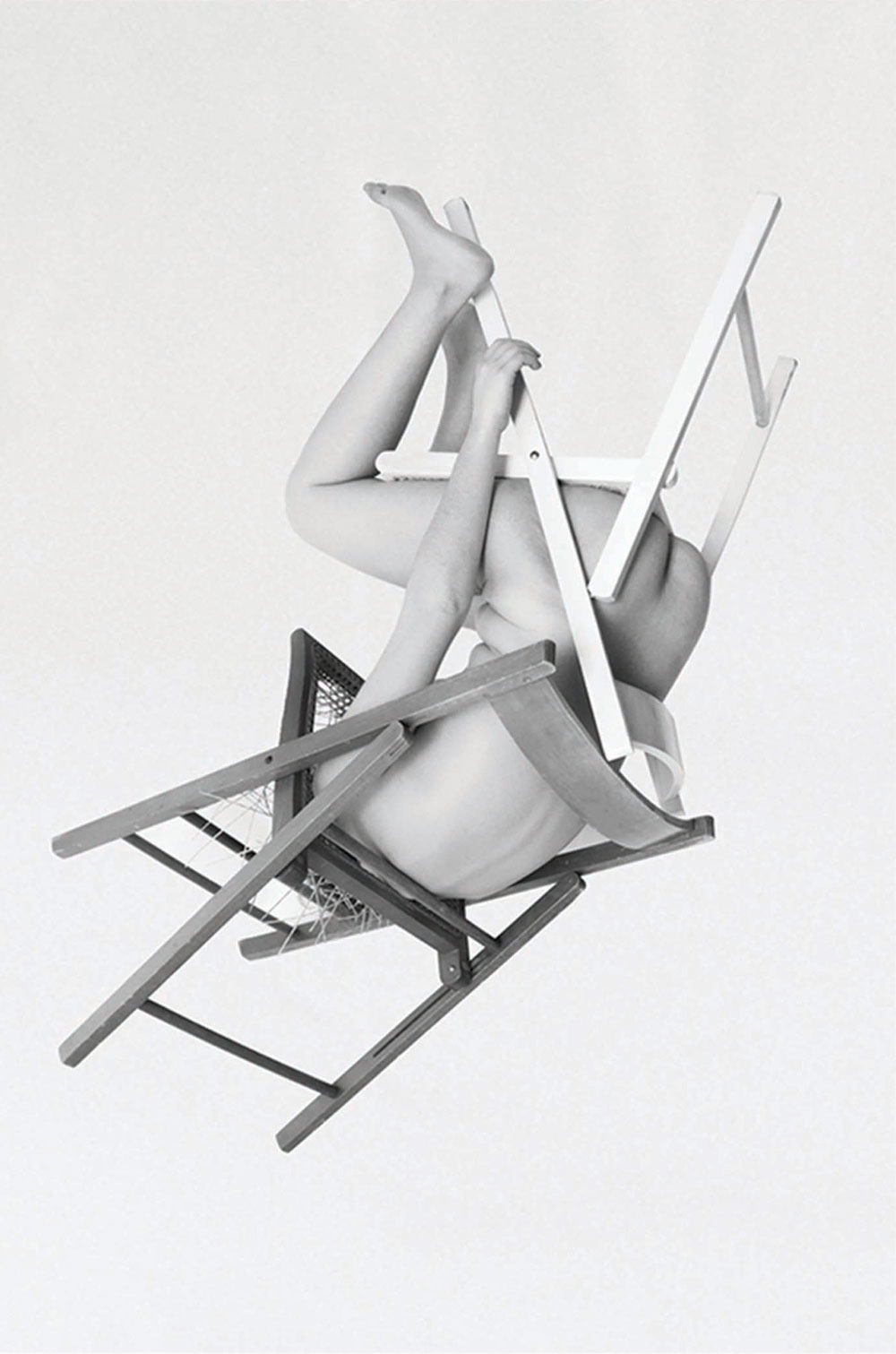
Leticia Zica currently based in Paris, France, grew up in the city of Belo Horizonte, Brazil. The camera was by her side since she was a teenager. At age 14 she did her first self-portraits and since then she continued in the world of photography, exploring themes such as feminism, the surrealist movement, and Brazilian culture.
Her works were exhibited in different parts of the world, such as the Bogota Museum of Contemporary Art, the Month of Photography Los Angeles, the Tiradentes Photography Festival, and Les Rencontres d’Arles, among others. She was a judge member for the Antiparos Photography Festival in Greece.
‘How can we make images in a world that does not exist? Are we going to have a futuristic body and mind? How the future is gonna be related to the woman’s body?’
With her work Interrupted, she explores how photography can open the dialogue to those questions. Through these self-portraits, she tries to change our perception through images that we don’t know if they are true or false. Moreover, she tries to instigate the viewer with her future.
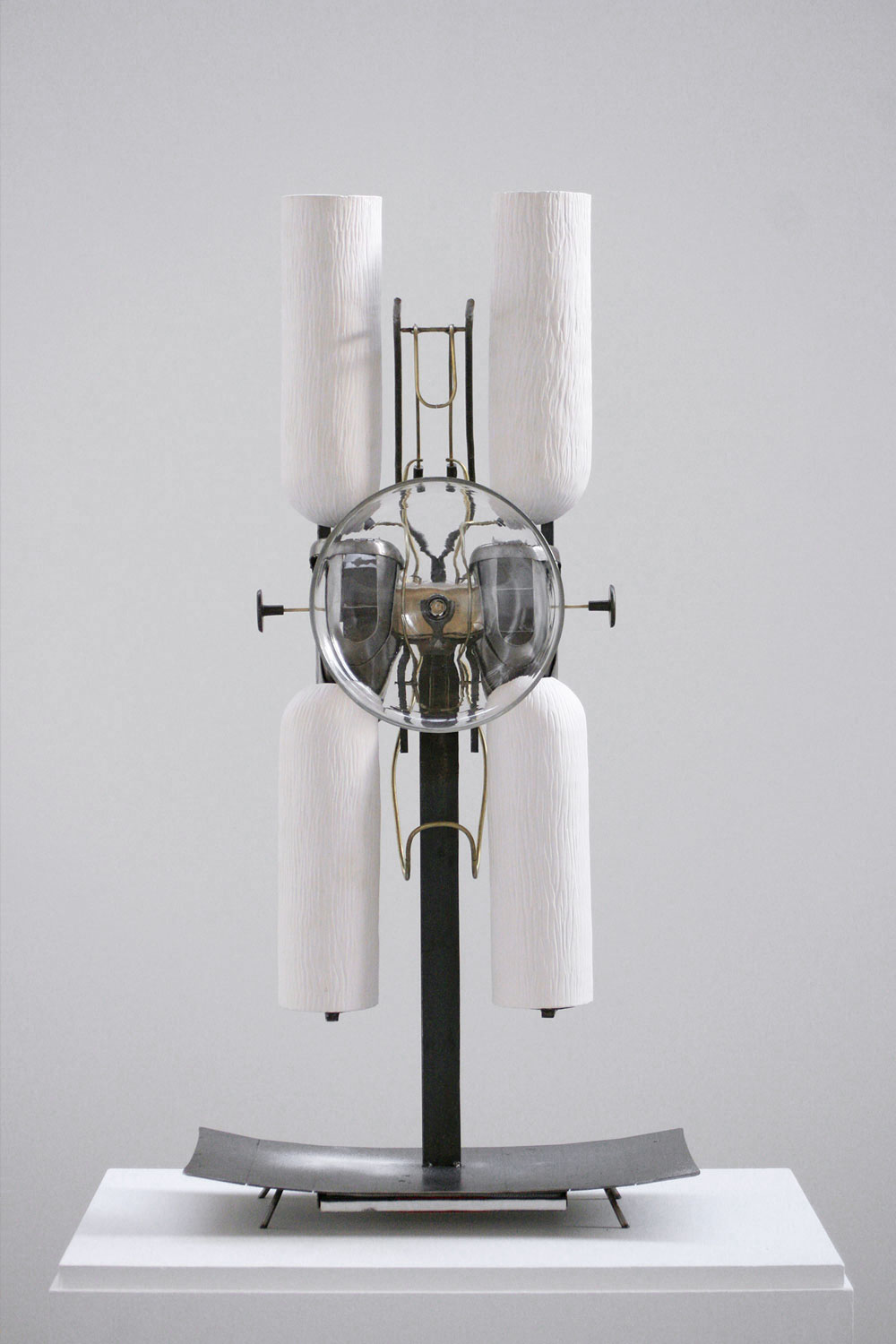
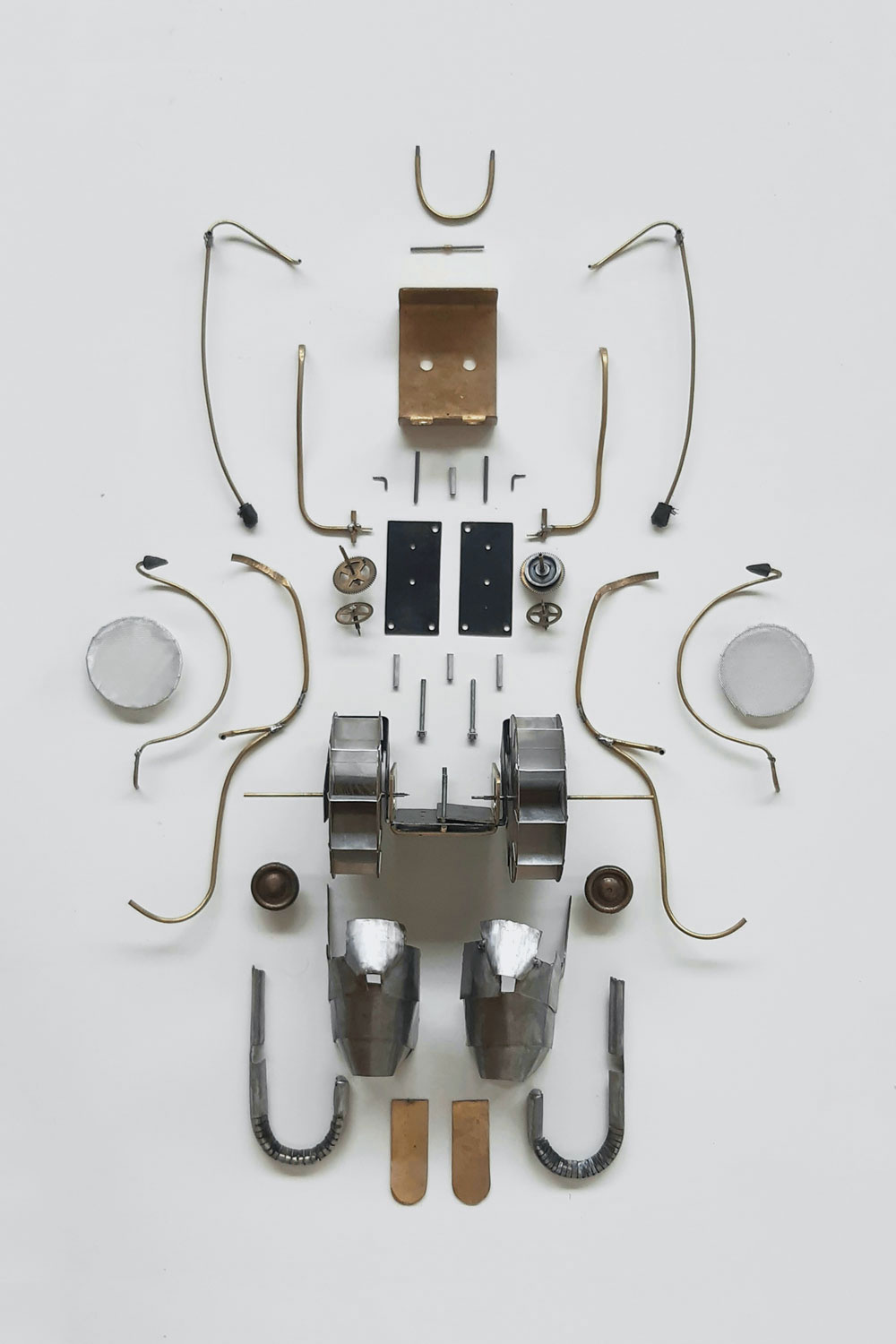
Anthony Leenders (Ghent, Belgium) in his practices explores ways of repositioning essential and primal elements within our habitat. Collectively these elements and entities can generate a strong current that raises awareness and stimulates a more balanced way of living. One that does not overburden our environment, but rather lays the basis for a more meaningful relationship with a planet that actively sustains the well-being of both nature and human beings, nurturing mind, body, and soul.
Kairos is a time instrument referring to one of two ancient Greek concepts of time: Chronos and Kairos. Kairos serves the opportune moment rather than structural, linear time.
‘The display of chronological time reminds me of the smothering performance-oriented society we nowadays live in. This entity serves as an alternative way of dealing with time. It can be used as a time-measuring tool for meditation, rituals, or as a free-time management tool to provide a pressure-free and more lucid time experience.’
The passage of time is not expressively visible but it is perceivable through sound. Depending on the size of the sand grains, time will pass a bit faster or shorter, it is never precise — which is the whole point. Being in this time is more about the activation, the embodiment, and the performance of the moment than about an exact amount of time.
Further, on the materiality of the object, all parts are handmade (except for the gears). And can be dismantled to make restoring, upgrading, and recycling processes easier. Beneath the socket, you will find Kairos’s biometric passport, its manual, and the logbook used as a tool for the object’s (after-)life agency… as well as a filter for the sand!
Kairos derives from an imaginary habitat that anticipated nowadays challenges. And offers an alternative landscape that is more in tune with nature’s rhythm. One that is rooted in a Utopian environment that escaped capitalism, into a society that is self-sustaining and independent.
‘1646 is happy to see so much talent from many parts of the world. We are pleased to get to know new artistic practices and look forward to following their development in the future.’
— Co-Directors at 1646: Clara Pallí Monguilod & Johan Gustavsson →

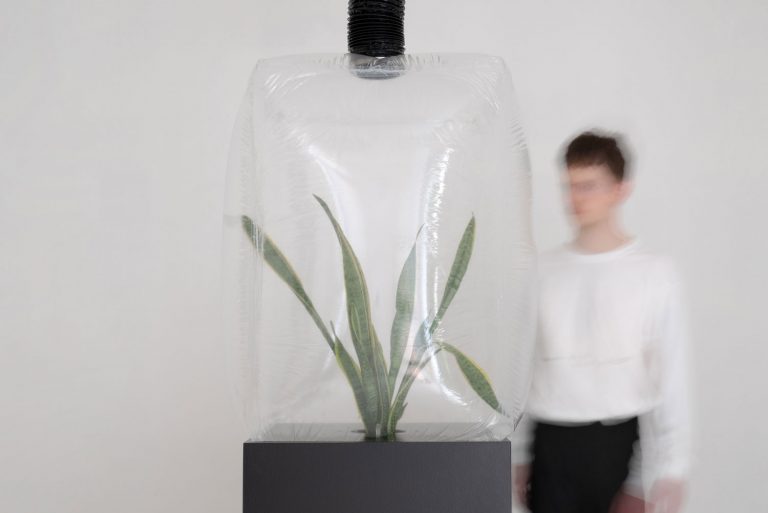
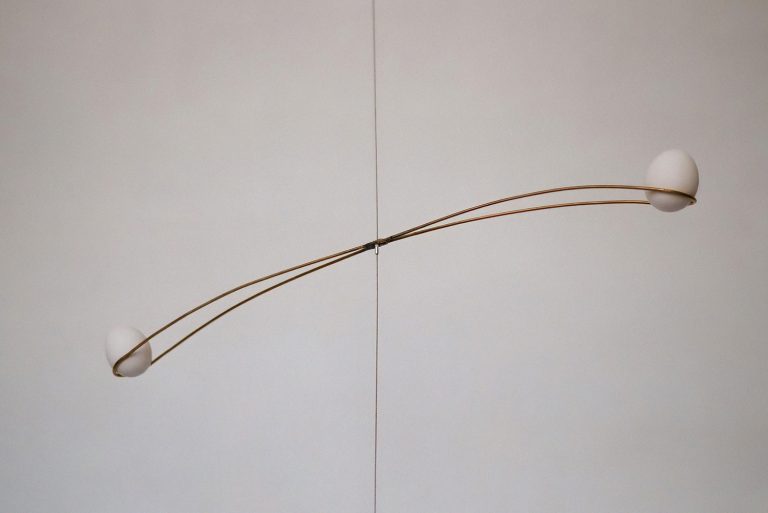
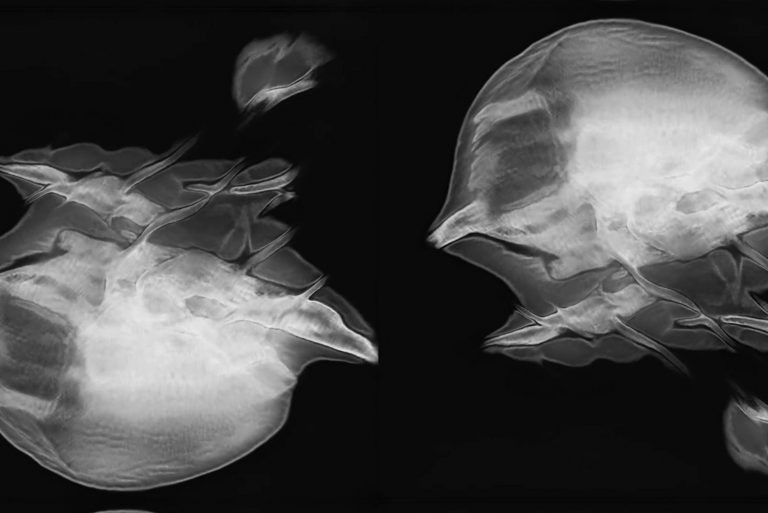
Independent Art & Design Gallery 0→1 © 2024
Stay in the loop with 0→1. Join our email list for the latest news, artist highlights, and first dibs on our exclusive collections. Dive into the art world with us — curated, simplified, and personal.
(We respect your inbox. Our updates are curated for value, and you can unsubscribe anytime. No spam, just art.)
We use cookies to improve your browsing experience; details in our Privacy Policy →